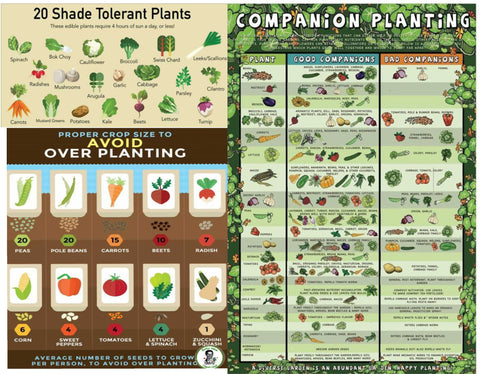Companion planting chart is a great way to garden. It involves growing plants together. They help each other grow. This is like plants being friends. They work together to be strong and healthy.

Credit: www.urbangreenfarms.com.au
What is Companion Planting?
Companion planting means pairing plants. These plants like being near each other. They grow better together. Some plants give nutrients. Others keep pests away. This helps all the plants grow well.
Why Use Companion Planting?
Companion planting has many benefits. It can make plants grow faster. It can also make plants healthier. It can stop pests from eating plants. It makes gardens look nice too.
Companion Planting Chart Basics
A companion planting chart shows plant friends. It tells which plants like each other. It also shows which plants do not. This helps in planning your garden.
How To Read The Chart
Reading the chart is easy. Find your plant. Then, look for its friends. Find other plants that grow well with it.
Common Plant Companions
Let’s look at some common plant companions. These are plants that like to grow together.
| Plant | Companion | Why They are Good |
|---|---|---|
| Tomato | Basil | Basil keeps pests away. It makes tomatoes taste better. |
| Carrot | Onion | Onions keep carrot pests away. |
| Cucumber | Radish | Radish grows fast. It breaks soil for cucumbers. |
| Beans | Corn | Corn gives support. Beans fix nitrogen for corn. |
| Rose | Garlic | Garlic keeps pests away from roses. |

Credit: thegardeningcook.com
Plants That Do Not Get Along
Some plants do not like each other. They should not be planted together. Here are some examples:
- Tomatoes and Potatoes: They share diseases.
- Carrots and Dill: Dill can harm carrot growth.
- Onions and Beans: Onions slow bean growth.
Tips for Successful Companion Planting
Here are some tips for success. These will help your garden grow well:
- Plan your garden space.
- Use a companion planting chart.
- Keep harmful plants apart.
- Rotate crops each year.
Plan Your Garden Space
Measure your garden space. Decide where each plant will go. Leave space for each plant to grow.
Use A Companion Planting Chart
Check the chart often. Make sure your plants have friends. This will help them grow strong.
Keep Harmful Plants Apart
Do not plant harmful plants together. This can make them weak.
Rotate Crops Each Year
Move plants to different spots each year. This helps the soil stay healthy.
Benefits of Companion Planting
Companion planting brings many benefits. Let’s look at some of them:
- Better growth: Plants grow stronger and healthier.
- Fewer pests: Some plants keep bugs away.
- More nutrients: Plants share nutrients in the soil.
- Beautiful gardens: Different plants make gardens colorful.
Better Growth
Plants help each other grow. They share space and resources. This makes them strong.
Fewer Pests
Certain plants keep pests away. This protects other plants.
More Nutrients
Plants share nutrients in the soil. This helps all plants grow well.
Beautiful Gardens
Different plants together make gardens look nice. They add color and variety.
Frequently Asked Questions
What Is A Companion Planting Chart Used For?
A companion planting chart helps gardeners know which plants grow well together.
How Does Companion Planting Improve Garden Health?
It reduces pests, improves soil, and helps plants grow stronger naturally.
Which Plants Are Best Companions For Tomatoes?
Basil, carrots, and marigolds grow well with tomatoes and protect them.
Can Companion Planting Increase Vegetable Yield?
Yes, it can boost growth and increase the amount of vegetables harvested.
Conclusion
Companion planting is a smart way to garden. It helps plants grow better. It keeps pests away. It makes gardens look pretty. Use a companion planting chart to plan your garden. Pair plants that like each other. Keep harmful plants apart. Follow these tips for a healthy garden.
4 min read

